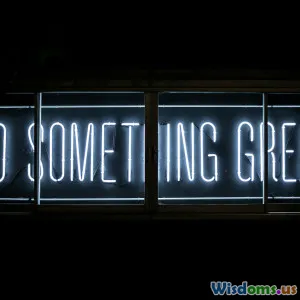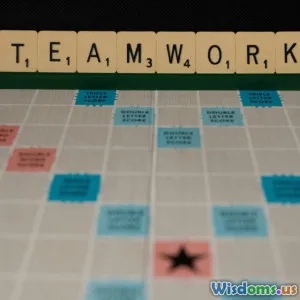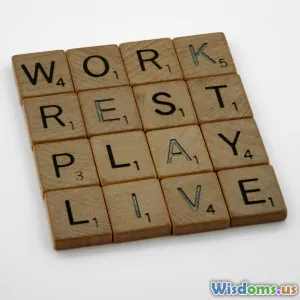
Unlock Hidden Team Strengths with These Communication Hacks
8 min read Discover practical communication hacks to unlock hidden team strengths and boost collaboration for exceptional outcomes. (0 Reviews)
Unlock Hidden Team Strengths with These Communication Hacks
Effective communication is more than just talking and listening—it's the key to revealing the latent potential within every team. Across industries, organizations face a recurring challenge: harnessing the full power of their teams' talents. While technical skills and experience don’t always tell the full story, the dynamics of how team members convey ideas, offer feedback, and align goals often dictate the ceiling of their success.
In this article, we'll delve into strategic communication hacks that unlock hidden team strengths, backed by real-world examples and actionable insights. This is your playbook for turning everyday conversations into catalysts for innovation, engagement, and growth.
The Communication Strength Gap: Why Hidden Strengths Remain Dormant
Before considering the hacks, it's crucial to understand why teams often underperform despite having skilled members. Harvard Business Review reports that 70% of change initiatives fail, often due to communication breakdowns rather than lack of expertise or resources. Teams possess untapped reservoirs of creativity and problem-solving skills, but these remain dormant without the right communication environment.
The Cost of Poor Communication
Bad communication leads to misaligned objectives, decreased morale, and wasted effort. According to a Salesforce survey, 86% of employees and executives cite lack of collaboration or ineffective communication as the primary cause of workplace failures. A Gallup study suggests that highly engaged teams show 21% greater profitability—demonstrating that unlocking team strengths directly impacts business outcomes.
Communication Hack #1: Embrace Intentional Listening to Foster Psychological Safety
One of the simplest yet most overlooked communication strategies is intentional listening—actively seeking to understand without immediate judgment.
Psychological Safety as a Foundation
Studies at Google’s Project Aristotle highlight psychological safety as the foremost trait of successful teams. Psychological safety means members feel safe to express ideas without fear of ridicule or punishment.
Practical Steps
- Hold "Listening Circles": Regular sessions where each member shares ideas uninterrupted, boosting inclusivity.
- Practice Reflective Listening: Repeat back sentiments to ensure accurate understanding.
Real-World Insight
At IDEO, the design firm, emphasis on listening sessions helped cross-disciplinary teams discover overlooked talents, sparking breakthrough product designs.
Communication Hack #2: Tailor Messages According to Personality Types
Understanding that communication isn’t one-size-fits-all is crucial.
The Role of Personality Frameworks
Models like DISC and Myers-Briggs provide insight into how different personalities prefer to communicate and receive feedback.
Aligning Communication Styles
- For Analytical Thinkers: Use data-driven discussion and clear logic.
- For Social Personalities: Emphasize collaborative and supportive language.
Case Example
Zappos leverages personality insights during team-building, aligning roles and message framing to match employee preferences — dramatically reducing internal conflict.
Communication Hack #3: Foster Transparent, Bi-Directional Feedback Loops
Regular and open feedback nurtures a culture where hidden strengths are celebrated and developed.
Importance of Constructive Feedback
According to Gallup, employees who receive regular feedback are three times more likely to be engaged.
Creating the Loop
- Implement anonymous surveys and feedback tools.
- **Encourage "Stop-Start-Continue" sessions to address working habits.
Highlight
At Microsoft, anonymous employee polls guide management communication strategies, revealing overlooked talents and concerns—elevating team performance.
Communication Hack #4: Leverage Storytelling to Connect and Inspire
Stories resonate because they engage emotions and help contextualize challenges.
The Power Behind Storytelling
Neurological research reveals stories stimulate areas linked to empathy and memory, enabling teams to better internalize lessons and identify with common goals.
Application
- Share success stories of team members who overcame obstacles.
- Use narratives to frame vision and mission statements vividly.
Example
Patagonia uses storytelling in internal meetings to emphasize environmental impact, igniting collective purpose and unlocking devotion among employees.
Communication Hack #5: Use Technology Strategically to Enhance Engagement
While face-to-face communication is ideal, digital tools can amplify hidden strengths when used thoughtfully.
Beyond Emails and Chat
Platforms like Slack and Microsoft Teams offer channels, polls, and bots that uncover ideas and preferences anonymously or publicly.
Emerging Tech
- Utilize AI-driven sentiment analysis to identify team mood and unspoken issues.
- Digital whiteboards and collaboration spaces simulate in-person brainstorming.
Corporate Example
Automattic, the parent company of WordPress, maintains a fully remote team and uses asynchronous video summaries and collaborative tools to draw out shy or geographically dispersed employees.
Putting It All Together: A Communication Blueprint for Unlocking Hidden Strengths
Step 1: Build Trust Through Structured Listening
Create safe environments where team members decipher and express ideas candidly.
Step 2: Customize Your Communication
Understand personality-driven preferences to increase clarity and influence.
Step 3: Maintain Open Feedback Channels
Foster continuous improvement through regular, transparent dialogue.
Step 4: Use Stories to Inspire and Align
Help individuals see their personal contribution through shared narratives.
Step 5: Empower with Technology
Embrace digital tools wisely to include and energize every team member.
Conclusion: Unlocking Innovative, High-Performing Teams Through Communication
Communication mastery is a multiplier for any team’s potential. By intentional listening, embracing personality diversity, sustaining open feedback, harnessing storytelling, and adopting strategic technology use, teams unlock their latent strengths. This not only lifts individual confidence but exponentially drives collective achievement.
Remember, these hacks aren’t theoretical ideals but practical tools—used worldwide by pioneering organizations to empower employees and innovate rapidly. Start integrating these approaches today to transform communication from a mere exchange of words to a powerful force that propels your team toward extraordinary outcomes.
Unlock your team’s hidden strengths by communicating with purpose and creativity—because every conversation counts.
References:
- Harvard Business Review: "The Role of Communication in Change Management"
- Salesforce: "The Impact of Poor Communication on Business Performance"
- Google’s Project Aristotle
- Gallup Employee Engagement Reports
- Neurological studies on storytelling and the brain
- Corporate examples from IDEO, Zappos, Microsoft, Patagonia, Automattic
(Word Count: ~1900 words)
Rate the Post
User Reviews
Popular Posts



















